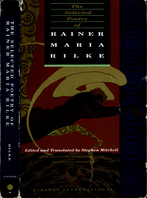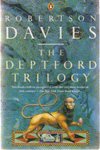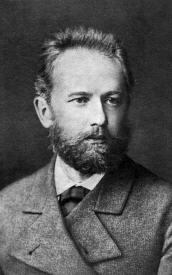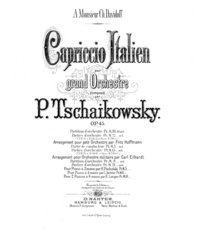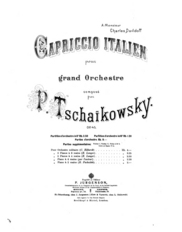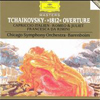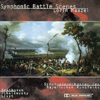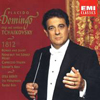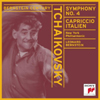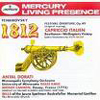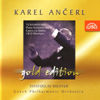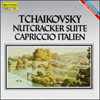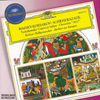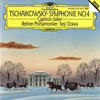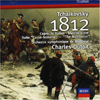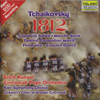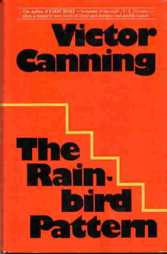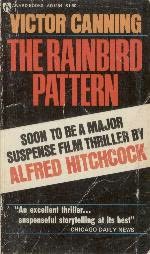Part one and part two of this horrifically open-ended exercise.
Samuel Adler (1928-): The Sense of Touch (1981) (age 53)
Subtitle: “Eight short pieces introducing the young pianist to techniques used in twentieth-century music.” Commissioned by Clavier magazine. Samuel Adler is not the only composer who thought to try his luck at the Mikrokosmos game – a potentially lucrative game, I guess – relatively speaking – but it is a harder game than it might seem at first and he does not win. Each piece is preceded by a list of descriptives (like “Mixed staccato and legato, single notes in both hands, variable dynamics between hands, time changes, many accidentals”) – hey, just like in Mikrokosmos! – which pretends to some kind of pedagogical planning. But naming characteristics of a piece does not the piece of any educational value make. Or of musical value make either. These are some seriously sense-and-form-deprived twiddles. I know well the composing trap of losing your sense of the pacing and sticking all your moments so close to one another that they don’t register – Adler seems to be deep in that trap at all times. Things just happen and then other things happen. It’s really remarkable how little a sense of rhythm he has for someone who obsessively writes all these meter changes. Seems like a smokescreen. I hope no young pianist ever had to play these. 12 minutes in all. No recording.
Samuel Adler: Thy Song Expands My Spirit (1980) (age 52)
Subtitle: “A tribute to Aaron Copland on his 80th birthday.” This is the best of the three Adler scores on the shelf, but none of them is any good. But this is the best. It makes some I think explicit references to textures and sounds from Copland’s music, albeit in a totally scattershot way that adds up to nothing. One could also point out that Adler generally uses textures vaguely stolen from Copland so maybe we shouldn’t even give him credit for that, but there’s a big high bell-ringing 10th in octaves at the beginning and end that’s pretty unmistakable. After a slow introduction that almost has some potential (because it’s imitating Copland), it devolves into bip bip bip dibby dibby dibby like all his other pieces, which I have a really hard time reconciling with that lame-ass inspirational title. (Yes, I see, it’s from Leaves of Grass.) Then at the end, very suddenly, thy Copland bells again. Incoherent. I could make a seriously tasteless comment about Alzheimer’s but I’m not going to. I certainly hope that’s not what Samuel Adler was going for! This is about 4 minutes (marked c. 3’30”). No recording.
I recognize Adler’s compositional style; I’ve composed this way too: Sometimes I feel lazy but still want to be “composing” – I don’t want to think hard about harmony, which doesn’t flow naturally to me, and I don’t want to have to keep track of structure, which doesn’t fall into place naturally for me. But I still want to be making stuff up, so I just let my brain do what it’s willing to do and no more. This yields a lot of goofy junk but at least I’m writing, right? Right. So Samuel Adler seems to have no other mode of composition, and his brain is even lazier (and/or less fluent in anything) than mine, which is no good because who am I and then who is he? These scores smell strongly of “don’t look back.” I would be shocked if there was a single note in these pieces that he took serious time weighing against alternatives. If he did, if this is all conscientious and I’m being a dick about it, I must say it is completely opaque to me. What could he possibly be trying to say with this language of endless twiddling? I guess that thy song expands his spirit.
Enough bashing Samuel Adler. Of all people.
Denes Agay (1911-2007): Mosaics: Six Piano Pieces on Hebrew Folk Themes (pub. 1968) (age 57)
Agay’s name is familiar from a thousand books like “The Joy Of Best-Loved Student Anthology Recital Favorite Piano Classics For Best-Loved Students compiled and edited by Denes Agay.” Born in Hungary, moved to the US during the war, lived in New York. Reported to have been the best daddy in the world. His work as an anthology editor far overshadows his compositions at most libraries, but here’s a little stash of Agay originals. The style of this set is first and foremost that of the Bartók “For Children” arrangements, second and secondmost that of, um, sixties sub-classical. By which I mean, like, Harvey Schmidt. I have no problem with either aspect, though the latter has dated more than the former. The writing is pleasantly straightforward to play, and the music is always doing something good-natured. The semi-commercial quality is, to me, charming. Musically, they feel and sound like children’s pieces but they’re a little harder technically than you’d expect from the extremely innocent affect. Just as Bartók’s pieces were a refinement of the standard pedagogical fare, these feel like a refinement (but less so than Bartók) of the standard 60s pedagogical fare, with folk tunes again, appropriately enough. Yes, there are a few scattered “Hebrew” touches but for the most part this is American divided by Bartók. Looks like there was once an obscure LP recording of this and some other Agay piano music, but long gone and good luck finding it. I clock it at about 10 minutes.
Denes Agay: Serenata Burlesca (pub. 1968) (age 57)
Again, totally unpretentious, innocent, plain and simple piece, but not inane. Has aged perfectly well. Sort of a “Till Eulenspiegel” type thing but with very simple textures. This music is by a “classical music” guy and has nothing particularly slick about it, but nonetheless feels to be from that “other” stream of composition in the 20th century, the commercial one that produced movie and TV scores and The Fantasticks etc. I hate it when people say that this commercial music is “just borrowing” ideas from classical music. It is what it is, I think, perfectly sincerely; “real” classical music borrows just as often. The difference is not the degree of authenticity, it’s the degree of artistic ambition. The ambition of movie music is just to be what it needs to be; so too this kind of piece aims only to be what it says it is, a Serenata Burlesca, using the sounds that struck its composer as appealing. Very easy ones, and why not? 2.5 minutes. Also on that LP.
Okay, fine, so the title is a little affected. But that’s just the way these things are done. Take it up with the culture at large.
Denes Agay: Seven Pieces (pub. 1969) (age 58)
These are even better. They’re actually simple enough for students, and have even greater charm than the preceding pieces. Similar in style and content to the Kabalevsky children’s pieces, and I would say just about as good. These in fact sound a lot more like Kabalevsky than like Bartók. They get harder as they go until the last one is genuinely intermediate; the last two pieces are also the best. About 8 minutes of music here. This one’s not even on that LP.
Denes Agay: Sonatina Hungarica (pub. 1967) (age 56)
More Bartók. I’m reminded of the Christmas Carols. I would say it’s derivative of them, but again, it doesn’t feel like it’s claiming otherwise. Who would waste their time pointing out that, you know, Harry Potter is derivative?* The fact that this stuff is all 100% good-natured simple fun is, however, a little more of a liability when he’s aspiring to a longer form – yes, even a sonatina counts as a longer form – and there are parts here where it starts to feel a little too dippy for a little too long. But of course that’s very subjective – all these pieces are constantly wobbling on the thin line around dippy-town. It depends on your mood. When I first set these on the piano the other day, when I wasn’t in as good a mood, they all seemed deeply, hopelessly dippy. But now I’ve opened my heart to it and found that they’re actually all pretty good, dippiness be damned. I wish there were more Denes Agays out there writing music that just aimed to be, you know, some fun music. Actually, I think there were and are lots of them. But the only way to dredge them up is to grind through every score on the shelf, apparently. These scores had never even been entered into the electronic catalog and caused some trouble at the checkout. The Sonatina is on the LP, by the way. Also about 8 minutes.
François Dagincourt [d’Agincourt] (1684-1758): Pièces de clavecin (1733) (age 49)
edited by Howard Ferguson (pub. 1969)
There is a rather unlikely choice in alphabetization at play here; most catalogs and reference sources list him under D. Your choices, in order of google popularity, are: d’Agincour, d’Agincourt, Dagincour, Dagincourt. Grove gives preference to Dagincourt. This volume is the complete extant harpsichord works – four “ordres” (like Couperin) of short pieces, mostly on dance forms. Also like Couperin, they are very heavily ornamented. 18th century ornaments are a real challenge for me – they give the music its character and yet also obscure it. They have to be handled exactly exactly right. Managing them is a bit like the trick of imparting just the right inflection to a jazz lick so that it reads as characteristic; getting the whole genre to “sound” depends on very very fine details of execution. Each of the four ordres takes about half an hour, and after my two hours or so playing through all these, I had become entirely drawn into their world of antique charm. It took some doing but I surprised myself, seeing as this isn’t really my usual fare. Once accustomed to the limitations and tendencies of this genre, you hear that Dagincourt is quite playful and has a fine sense of how to lightly shake a conventional phrase into being distinctive and flavorful. There are some more ambitious numbers but the range of ambition isn’t as broad as with Couperin (or with Bach, of course). I offer here a single very modest piece (“La Courtisane”) to give a sense. Aren’t the shifting phrase lengths delightful? Also included is the all-important table des agréments. Not until dealing with this book did I really process the idea that 18th-century trills begin on the upper tone – i.e. not the written tone. The complete collection of pieces has recently been recorded in its entirety by a woman who lives near me, in two volumes, one and two. You can listen to quite a few samples there. Her playing is intelligent, but many of the quirky charms I found as I played through it seem to disappear into the folds of “harpsichord rubato,” at least to my ears. I think I have a particularly low tolerance for rubato – what she does is quite restrained as these things go.
Maria Teresa Agnesi (1720-1795): Sonata in G
Maybe 3 minutes, single movement. This is one of the many publications of the Hildegard Publishing Company, dedicated to reprinting works by women composers, regardless of quality. Hard to say whether this ends up working for or against prejudice. Maria’s little sonata movement is totally undistinguished and rather inelegant, like a passing job of the “write a classical sonata movement” exercise from a beginning music theory course. Could be worse, I guess. Hildegard has the first page of the score online for your perusal. Peruse and see for yourself. Also someone has made a midi file of it. And look, there actually is a recording.
Roy E. Agnew (1891-1944): Fantasie Sonata (1927) (age 36)
Grove on Roy Agnew: “one of the few Australian composers to achieve international recognition in the first half of the 20th century.” This piece, a single-movement sonata, is 90% Scriabin and 10% Debussy; the hybrid is not particularly convincing. Scriabin’s late music only works because of its fanatical rigor – imitations, and there are many, tend to be loose and stringy by comparison, as is the case here. Chord spelling in this score is confusing and/or confused and there are almost no cancellation accidentals, so it’s not a pleasant read. The notation also adds to an impression that the sounds were arrived at haphazardly. It’s not a terrible impression of Scriabin – a good performance could be pleasant. But I’m not sure what you can get here that isn’t better in the real thing. My favorite bits are the parts that deviate the furthest from Scriabin, like the top of the development. I estimate about 11 minutes but who knows. Thanks to the National Library of Australia, the score (to this and all the subsequent Agnew pieces) is available here! For all of them, you can browse the pages, or click on “Print” to get a PDF of the whole thing.
And wait – this added later – I just found out it gets better! Hear the composer’s own performance, in its entirety! Here! It comes out just under 10 minutes, so I wasn’t too far off.
Roy E. Agnew: Sonata Poeme (1935) (age 44)
This and the next two pieces are bound into a single volume, presented to the library by Mr. Andor Foldes (pianist and conductor, 1913-1992). To my ears this is, quite explicitly, Scriabin’s Sonata No. 4 translated into British. With some Hollywood thrown in. And a little erratic. And not entirely pianistic. If that sounds good to you, you may enjoy it. Score at National Library of Australia is here.
Oop, and this one has a recorded performance too. So I can say with confidence that this piece is about 8 minutes long.
Listening to the man perform his own pieces, they seem different to me than when I played through them – a good deal vaguer about what they’re saying. He seems to subscribe to the “habitually frantic” school of romantic pianism, which I guess makes sense of some of the writing – maybe sense should be in quotes – but this kind of flailing-as-poetry leaves me pretty cold. He sounds like he was a good enough pianist to know what he was doing, so I’m going to assume these are definitive interpretations and that my problem is with the compositions themselves.
Roy Agnew: Toccata Tragica (1921) (age 30)
Score here. More flailing-as-poetry. This time there’s not even much of a motivic justification for what’s going on – it all seems fairly directionless and improvisatory. A very basic ABAB structure and only 5 minutes of music makes the flailing A section sound all the more arbitrary. The B section just sort of sits and simmers in its own juices. I’m not sure I buy “Toccata” or “Tragica.” Maybe Toccata in the old sense of an improvisation. I don’t think this one has a recording out there.
Roy Agnew: Dance of the Wild Men (1919) (age 28)
The score. At least one recording exists. It says about 3 minutes and I concur. This was my favorite of the Agnew; his spastic tendencies are at least partially justified by the title, and it builds up to a satisfying “primitive” refrain right out of Max Steiner, with the delightful indication “bang.” Seems like the title indicates an imitation of Ornstein, whose “Wild Men’s Dance” is supposed to have made a big splash in the teens. But Ornstein’s flailing is really, murderously, machine-gun brutal, whereas Agnew can only manage King Kong. So if there’s an influence, it doesn’t reflect well on Agnew, who has drastically diluted it. If there’s not a connection… well, the criticism still holds.
Miguel del Aguila (1957-): Conga (1993) (age 36)
Miguel del Aguila has a MySpace page where you can hear some clips. He also has a homepage. You can email him if you want. At this page, which may soon cease to exist, you can hear clips from an orchestral version of the present work, retitled Conga-Line in Hell, in which the piano part is essentially intact. Both versions, and another one, have been recorded; see the composer’s pages for details. This is an obsessive post-minimalist breakdown on several standard conga figures. Hearing them shuffled together, and with a beat taken out or added here and there, is fun enough, but that’s a pretty superficial kind of fun for 10 minutes of music. Maybe it’s more interesting in the orchestrated version, but for solo piano it runs thin by the end, which is a shame because there are cute ideas here. Including (the guy at that page linked above agrees with me on this) a recurrent overt reference to the West Side Story Mambo. Well, almost cute. I want to like it because why not, but nothing about it quite works well enough. Post-minimalist anything-goes is actually a pretty tough gig to impress with, and many pieces from the past 20 years strike me as flimsy in the same ways: the materials seem artificially, frustratingly limited, despite the fact that the composer also shows himself to be almost indiscriminately open to whimsy. When a work manages to seem both disconcertingly free and disconcertingly constrained, that to me is a sure sign of insufficient craft. That really sums up the compositional shortcomings of pretty much all my various musical peers, too. And let’s not forget myself.
If you can’t be true to the logic either of rigor or of fantasy, what are you being true to? I think you have to be true to something or nobody’s going to want to listen.
Added later: I’ve now heard the recording off this CD. Good performance but didn’t change my impression of the piece.
Miguel del Aguila: Sonata No. 2 (1988) (age 31)
Recording available, samples (and the possibility of purchasing mp3s for download) at amazon. That guy doesn’t seem to be playing it very well though. This is, by my estimation, a slightly better piece, but still marred by the same problems as the above, particularly the first movement, which runs out its little idea on the first two pages and then expands it needlessly into 7 minutes (or 8 on that CD). It’s sort of a stilted Latin ostinato (there are names for these things) that reminded me a little of Camargo Guarnieri, but with much less color. Again, the materials seem to have been intentionally drained of any real fantasy, despite being essentially fantastic. The second movement isn’t particularly Latin at all – it’s some kind of Porgy and Bess blues material spun out lazily in ways that seem to aspire to bitonal weirdness but are actually pretty dull and/or gawky. The third movement is the best and is pretty much a conceptual retread, or a pretread, of the Conga above. It’s mostly better, and certainly better scaled. He chooses to throw in a little “12th Street Rag” thing at the top. None of it is brilliant exactly but I had some fun playing through the shifting meters. Not sure I’d care to listen. In total this is about 15 minutes.
In every movement I get the sense that his ear for the idiom he’s riffing on is actually much less sophisticated than the act of riffing would suggest. Which is often my impression with John Adams, who eventually proved me right with that really embarrassing, unacceptable “pop musical theater” thing he wrote. I think Aaron Copland admitted that for all his “jazz-derived” pieces, he knew very well he didn’t have a sense for actual jazz, and had to get Leonard Bernstein to write the 8 bars of jazzy piano in Rodeo for him. You can hear that in his Piano Concerto and other pieces – he knows exactly what he’s talking about, but that’s genuinely as close as he can get to it. Whereas music like this present piece seems to me to claim a more knowing, post-modern relationship to its sources, more akin to ownership. I don’t think it lives up to that.
Let me take this thought a step further: why do so many “serious composers” seem to be such terrible musicians? You know what I mean. Like why do they have such a tin ear for the vernacular? I love Copland, don’t get me wrong, but I feel like the fact about him that he couldn’t work out how to write a jazz piano part shows through in every bar he wrote. Shostakovich is given all kinds of credit for being fluent at writing light music – doing that arrangement of “Tea for Two” and all that – and certainly he could do it better than most 20th century serious composers probably could have, but his light music is frequently stiff in a snarky way. People might savor that now but is it really because he wanted to imbue everything he did with “artistic distinction,” which is the opposite of naturalness? I don’t buy that. I think he was a little stiff at his craft. Like that “Tea for Two” arrangement, let’s admit it, wouldn’t pass muster in Hollywood; it’s too blocky. The fact that William Bolcom can actually write, with musicianly understanding, in a variety of popular styles, to me shows through in his serious music as a kind of marked confidence and fluency. Gershwin was the king of his popular styles and then had to struggle uphill from there to gain any kind of comparable skill in a very closely related “serious” style; it takes a lot of work to attain mastery of any given musical language. Why do so many composers of the twentieth century get away with attaining mastery only of, as it were, their own domains, and no actual human languages at all? I don’t mean they should have to master classical counterpoint before they write twelve-tone; I mean they should be versed in a living musical tradition before they pursue mastery of dead ones, or try to concoct their own.
This goes for performers, too. Doubly. To take an example that I’ve encountered several times – if a classical pianist can’t play jazz-inflected rhythms like he actually speaks the language – jazz rhythms being a ubiquitous, living, genuinely human language, as easily picked up as, say, English – why on earth should I trust him to play the dead language of Mozart, or the minotaur half-languages of so many 20th century composers? A person who never had occasion to learn any human language is the wrong person to hire as a translator! Or as an author.
There’s a flip side to this argument but it makes itself; “…far from dead…” “…it is their first language…” etc. That side is a lot weaker. The reader is free to construct his/her own counterarguments. I suggest Klingon and/or Gertrude Stein as cases, but that’s me, and I’m going to let this drop.
Miguel del Aguila: Toccata (1988) (age 31)
Don’t think it’s been recorded. 5 minutes-ish. A bangy alternating-hands figure – like the other pieces, reminiscent of Ginastera – that drifts up and down the keyboard, flipping from one dynamic level to another, failing to cohere into anything dramatic. The most purely minimalist of these pieces. Pretty much just an exercise in steering a certain type of energy as it gallops forward. Could have steered it better. But at least it’s only 5 minutes, so the single not-quite-idea can sustain your superficial attention for the whole piece, pretty much.
Basically: these Aguila pieces are fun, but fun so ill-crafted that it’s not really that fun. From his list of upcoming performances and commissions, it seems like his career is going reasonably well. I guess these pieces are “accessible,” in the sense of “safely programmable.” They reveal themselves immediately and thrash rather than grow. So what’s to access?
Okay, there’s only one more, and then we’re done. I pushed through this far because after this one we hit the expanse of Albéniz, into which I may or may not continue. In any case he obviously calls for a separate entry, so this last piece seemed like the proper demarcation.
Tor Ahlberg (1913-): Liten Svit (1943) (age 30)
Onlly bio of Tor Ahlberg I can find. This seems to be the most uncommon score thus far – only a very few copies in worldcat; I don’t think Tor Ahlberg’s music has ever reached very far outside Sweden. No recordings as far as the internet can see. Basically, you will never encounter this piece. You know what I say to that? You wanna know what I say to that? Here you go. This is a violation of Swedish copyright. If you like this piece, buy it. It’s not obvious how you would go about doing that. I dare you to buy it. I think someone on this page might be able to help you. Maybe.
I have to assume – and yes, a Swedish-English dictionary just bore me out on this – that “Liten Svit” means “Little Suite.” Each of the four movements is only two pages and lasts about 2 minutes, for a total of about 8. The latter three are after the style of what I suppose is the Hindemith school, though I don’t know enough about Swedish composers to know how the chain of influence might actually have worked. They’re superficially neoclassical but the angularity of the sound is “tart” a la Busoni (say) rather than “dry” a la Stravinsky; Ahlberg’s various quirks seem to have been arrived at intuitively and are fairly raw. But it’s the first movement that’s the oddest of all – the right hand spins out pentatonic hanging gardens while the left leads it through several inexplicably awkward harmonic excursions. Is the opulent effect being intentionally subverted or does he not know what he’s doing? Or is the effect not supposed to be opulent at all, but something even weirder? It ends with undeniable crystal sparkles, so some degree of opulence seems intentional. Perhaps the right hand is supposed to hover somewhere in between the wash of Debussy and the filigree of Chopin. I’m not sure it succeeds because I’m not sure what it’s doing – which I guess is itself an indication that it’s not succeeding – but in any case, it’s certainly an interesting little slice of obscurity.
Okay! Back to the library with the lot of you.
* Oh, did I?
